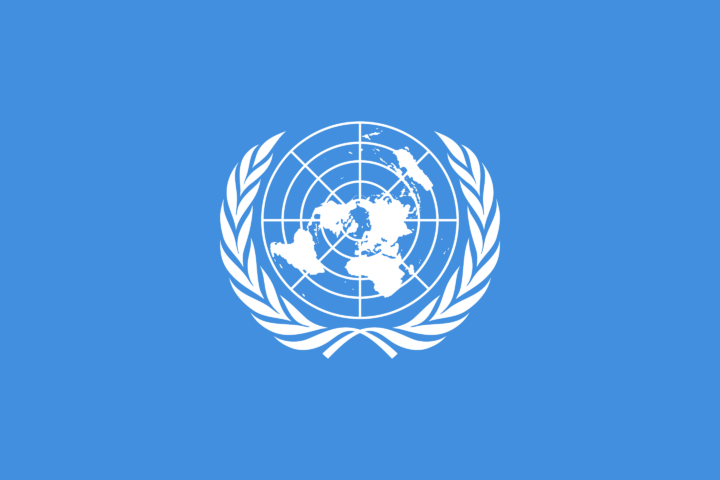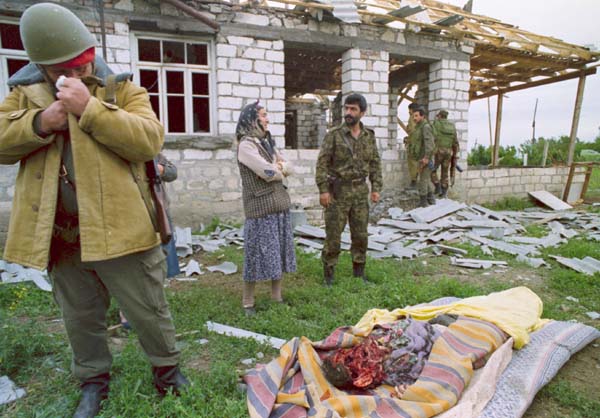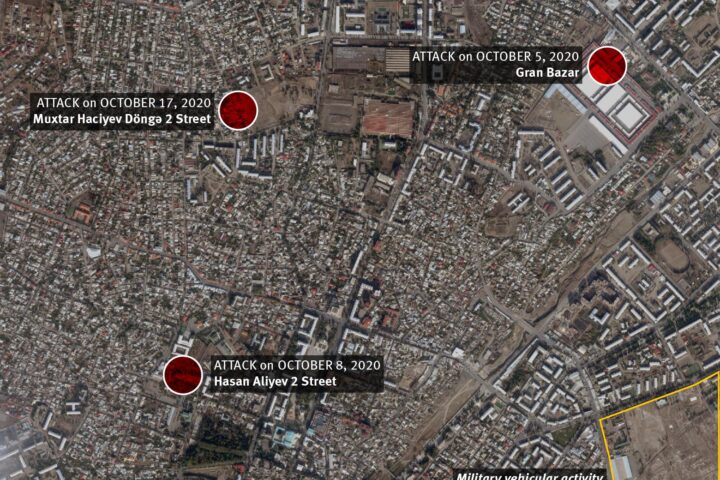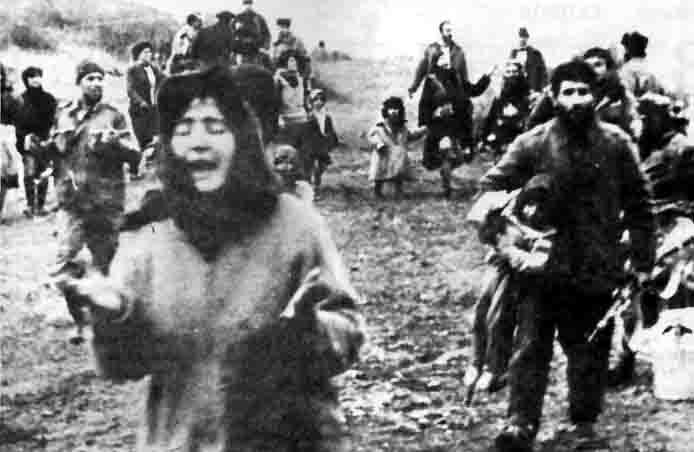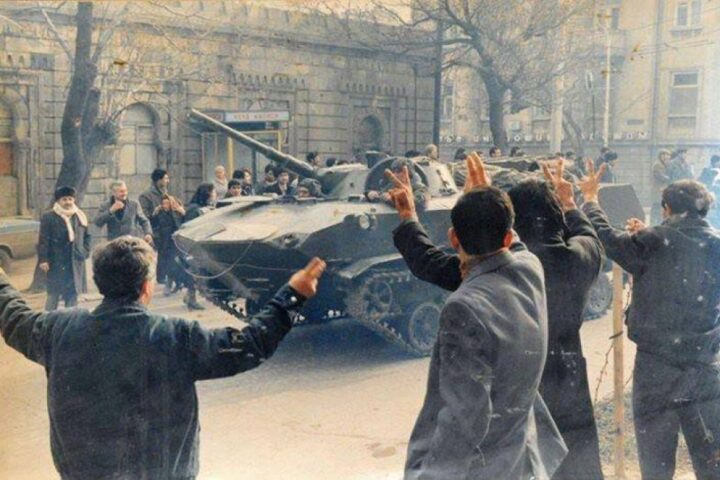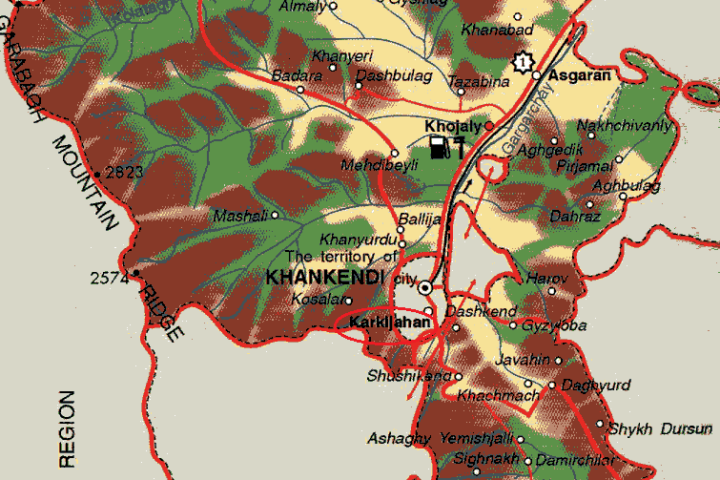4.4. Assessing actions of the Republic of Armenia as an act of aggression
Now, we should review the possibility of assessing actions of the Republic of Armenia as an act of aggression under Article 39 of the Charter. An act of aggression means continuous use of direct or indirect armed force, i.e. this is the breach of peace in any case.[ref]see, Jochen Abr. Frowein., in: Bruno Simma, «Charta der Vereinten Nationen», 1. Aufl., München 1991, Art. 39, RN 12.[/ref] As it is known, this conflict did not begin by using direct armed forces from the territory of Armenia to Azerbaijan. The Armenian population of Nagorno-Karabakh had started the conflict on the territory of the Republic of Azerbaijan. Actions of the Republic of Armenia in this conflict coincide with Art. 3, lit. g of the Resolution of the UN General Assembly on «Definition of Aggression», dated from 14 December 1974. It states:
«Article 3
Any of the undermentioned actions should be assessed as an act of aggression under provisions of Article 2, notwithstanding declaration or non-declaration of war. ……g) The sending by or on behalf of a State of armed bands, groups, irregulars or mercenaries, which carry out acts of armed force against another state of such gravity as to amount to the acts listed above, or its substantial involvement therein”[ref]see, G. А. Resolution 3314, Tomuschat, Voelkerrecht, p. 84.[/ref].
In its decision, issued on Nicaragua case, International Court of Justice referred to this provision and recognized it as a valid customary law. When treating the issue from this aspect, it is possible to insist that the Republic of Armenia has violated valid customary law and thus, peace envisaged in Article 39 of the UN Charter by its actions, i.e. sending paramilitary bands and other groups.
4.5. Intervention possibilities of the UN Security Council in presence of threat to the peace
Article 39 of the UN Charter authorizes the SC to intervene not only in the case of breach of peace, but also in the case of threat to the peace. When any threat to the peace exists, intervention covers preventive authorities. But a question arises: What are the margins of preventive authorities of the SC? When treating the notion of threat in the narrow sense, only imminent breach of peace may be regarded as a threat to peace.[ref]see, Joachim Arntz., Der Begriff der Friedensbedrohung und Praxis der Vereinten Nationen, Bonn 1975, p. 22.[/ref] Such approach allows limiting authorities of the SC and thus, meets the principle of sovereign equality.
But it is possible to interpret the notion of threat in a broader sense and define it as an action beyond simple violation of borders. In the practice of the UN SC the situations of gross violation of human rights within any state were assessed as a threat to the peace with a certain caution. Nevertheless, beginning from 1990s of the last century, the SC has developed a different practice. According to this practice, gross violation of human rights within any state from the point of view of partial crossing of borders (e.g. refugee flow) within any country are also assessed as the threat to the peace (For example, the SC Resolution 688 dated 5 April 1991 (Iraq); the SC Resolution 841 dated 16 June 1993 (Haiti); the SC Resolution 955 dated 8 November 1994 (Rwanda); the SC Resolution 794 dated 3 December 1992; for comparison, also the SC Resolution 1137 dated 12 November 1997 (on violation of disarmament provisions); the SC Resolution 1161 dated 9 April1 1998 (illicit arms trafficking in crisis areas).
Conclusion
In conclusion of all above mentioned statements, we can say that the Armenian population of Nagorno-Karabakh is not entitled to secede from Azerbaijan and build their independent state according to international law, as they constitute national minority in Azerbaijan and they had never been exposed to systematic gross violation of human rights.
When taking into consideration the fact that more than one million people have become refugees and IDPs as a result of this war, and gross violation of human rights has taken place during these processes, we may say with confidence that during the conflict all conditions, mentioned in Art. 39 of the UN Charter, were present, which gives ground to say that the SC had to take appropriate and necessary measures and recognize the Republic of Armenia as an aggressor under Chapter VII of the Charter.




